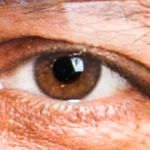- Home
- Stock Contributors
- Discussions
- Re: AI generated photos quickly rejected
- Re: AI generated photos quickly rejected
AI generated photos quickly rejected
Copy link to clipboard
Copied
Hello,
Months ago, I successfully uploaded AI generated photos.
Last days I generated new AI photos, and did this the same way as when they were approved.
Last night I uploaded 15 images, and now I see only 2 are in the assessment phase, 8 are declined, and the other 5 are... missing?
I don't understand why the pictures are getting rejected so quickly.
Apparently, something is wrong with the image but I don't know what.
I make the image 4 times larger without noise reduction before I upload them.
This are all JPEG-files.
I add one of the images as example as attachment. Looking forward to hear help/advice.
Thanks!
Thomas
Copy link to clipboard
Copied
It may well be, as you do always the same, that the images that got accepted got accepted by error. I suppose that the refusal reason was quality issues.
Check the hands, check the keyboard, check the screens foot and you will see a lot of rendering errors that need to be fixed before submitting. In addition, your hands look very sytetic, plastic like.
Copy link to clipboard
Copied
Thanks for your quick reply.
Do you think it will help if this will be uploaded in PNG instead of JPEG?
Otherwise, I have to find out how to fix such things, as I simply make images using AI
And for example, one of the refused images was just an illustration..
Copy link to clipboard
Copied
You probably misunderstood the use of PNG files. PNG files need to have a transperent background, and changing the file format will not change the issues in your asset. You will need to fix the issues. And if I could give an estimate for succeeding such a task: given the number and the severence of the rendering errors, the asset cannot be saved without having to redraw 80% of the picture. I would try a different generator or try to generate more photorealistic assets.
The asset as shown here is also an illustration as per Adobe's definition. It should not be uploaded as a photo.
Copy link to clipboard
Copied
I appreciate your help so far!
My earlier uploaded pictures were uploaded in PNG that's why I was wondering whether that could help.
Before I try to fix rendering errors, which I don't have experience with yet, I have one more question.
Right now I make the images with DALL-E and then resize them x4, using Bigjpg.
Could the problem also be caused by Bigjpg and is it advised to enlarge the images somewhere else?
Copy link to clipboard
Copied
Converting assets to PNG does not change the quality of your pictures, especially, it does not make disapear rendering errors. Converting from PNG to (low quality) JPEG may introduce compression artefacts, but as long as the JPEG compression quality factor is kept at max, there won't be issues.
Rendering errors are errors out of your AI, and not upscaling errors. Rendering errors are crooked geometries, anatomy errors an the same. Upscaling errors are different. Mainly, upscaling amplifies the errors typically introduced by the rendering, but it does not create those errors.
Copy link to clipboard
Copied
You probably must be right about the earlier uploaded images being accepted on error.
Apparently, ChatGPT is able to re-render the images which were created earlier.
So, later today I will try to re-render all of the images and see if they will be accepted :))
To be continued...
Thanks for helping me out!
Thomas
Copy link to clipboard
Copied
You probably must be right about the earlier uploaded images being accepted on error.
Apparently, ChatGPT is able to re-render the images which were created earlier.
So, later today I will try to re-render all of the images and see if they will be accepted :))
To be continued...
Thanks for helping me out!
Thomas
By @Bons.ai
This does not look like a good plan. Except if they updated the rendering engine, I would strongly suspect to get the same errors again.
Copy link to clipboard
Copied
"This does not look like a good plan. Except if they updated the rendering engine, I would strongly suspect to get the same errors again."
Not necessarily. I haven't purchased a ChatGPT plan yet, but I have experimented with my three or four free credits per day. ChatGPT text-to-image is a whole different animal compared to all the others I've played with. Most, like Firefly and Midjourney, will provide four entirely random and varying examples from the same prompt. ChatGPT does not work this way. For example, let's assume you wrote a complex prompt detailing every aspect of what you wanted the prompt to produce. With your permission, I could take that same prompt and ChatGPT would reproduce the result exactly, down to the very last pixel.
In @Bons.ai's example, they might say something like, "This is not bad, but please make the hands more photo-realistic." And ChatGPT would do exactly that, while retaining a replica of the remaining pixels in the asset. It's both fascinating and frightening at the same time. At minimum, the days of sharing prompts for inspirational purposes are over when it comes to ChatGPT.
At least that's been my experience with it so far, when I asked ChatGPT to produce an image of a woman standing openly in the rain with people behind her cowering under umbrellas. It performed admirably. Then I replied with something to the effect of, "That's perfect, but now make the woman African American. And that was the only thing in the result that ChatGPT changed.
Anyway, just as example, based on my limited experience with ChatGPT so far.
Community Volunteer | I don't make the rules; I just try to explain them.
--------------------------------
Why did Little Miss Muffet step on the spider? Because it got in her whey.
Copy link to clipboard
Copied
@daniellei4510 ChatGpt has a very high understanding of prompts. But it's not enough to seduce me.😉
Copy link to clipboard
Copied
I've only been using my 4 credit freebies per day so far. I'm not yet convinced I want to drop $20 to experiment further at the moment. 🙂
Community Volunteer | I don't make the rules; I just try to explain them.
--------------------------------
Why did Little Miss Muffet step on the spider? Because it got in her whey.
Copy link to clipboard
Copied
I think you are probably right.
I made plenty of new images meanwhile, but most of them are still getting rejected. Even for more simple images.
So, I think I have to use a program like Topaz.
I am wondering how other people do this?
If you also make AI-images via ChatGPT, what do you do to make them suitable for Adobe Stock?
Curious to hear.
Thanks
Thomas
Copy link to clipboard
Copied
I am wondering how other people do this?
If you also make AI-images via ChatGPT, what do you do to make them suitable for Adobe Stock?
By @Bons.ai
Correcting the rendering errors. If it is not possible to correct them, do not submit. The difficult part is to learn, what needs to be corrected.
Most images are probably rendered by Midjourney.
Copy link to clipboard
Copied
Before I also need a subscription on Midjourney..
I can just upload ChatGPT generated images there and Midjourney will render the images properly?
I have to be honest, I currently have some images where I don't know what needs to be rendered actually
Copy link to clipboard
Copied
I can just upload ChatGPT generated images there and Midjourney will render the images properly?
By @Bons.ai
Midjourney is a different commercial product, but it specializes in pictures. You will need a subscription, however, to use any of the assets commercially. What do you mean with "render images properly"?
I have to be honest, I currently have some images where I don't know what needs to be rendered actually
By @Bons.ai
No Idea what that means.
(If English is not your first language, it may be easier to write in your language, and we use the translation.)
Copy link to clipboard
Copied
I understand I was not clear enough. Sorry 🙂
I meant that with some of my images, I don't see what the actual quality issues are. In my opinion it are great images.
Do you think with using Midjourney, it generally creates images that are more likely to be approved?
And if you personally need to correct something, how would you do this?
Copy link to clipboard
Copied
In the image posted aboove, the hands have a plastic look to them.
Community Volunteer | I don't make the rules; I just try to explain them.
--------------------------------
Why did Little Miss Muffet step on the spider? Because it got in her whey.
Copy link to clipboard
Copied
Hello. You were absolutely right about the hands which looked plastic on the earlier sent image.
I am aware of it for new images now. Thanks
What do you think about this image?
It has been rejected multiple times now.
Yesterday I made it "Adobe-proof" on ChatGPT.
It should be high resolution, have clean lightning, human realism, clean tablet screen, realistic hands, non-distorted background. The hands of the man don't look plastic. Maybe the robot is plastic, but he could be plastic.
This is a kind of image where I don't see what still needs to be changed. If you know the answer I'm thankful.
Appreciate your help!
Copy link to clipboard
Copied
The man himself looks kind of robotic or mannequin-like. Also, yet another white robot. There are thousands of white robots in the database. The man's thumb is poorly rendered as well.
Community Volunteer | I don't make the rules; I just try to explain them.
--------------------------------
Why did Little Miss Muffet step on the spider? Because it got in her whey.
Copy link to clipboard
Copied
The sharp line around the edges is unrealistic.
Copy link to clipboard
Copied
Good findings from you both!! I see there are plenty of things I still need to learn.. 😉
I don't think ChatGPT will be able to fix such errors..
So I will try Topaz software, maybe that will work... if you think that's a bad idea, or there is a better option, please let me know 🙂
Copy link to clipboard
Copied
I have both Topaz Photo (which I rarely use) and Topaz Gigapixel AI (which I always use for upscaling). Both are good for sharpening, but this isn't the problem with your robot image. If anything, it's too sharp, which is causing the halos.
Community Volunteer | I don't make the rules; I just try to explain them.
--------------------------------
Why did Little Miss Muffet step on the spider? Because it got in her whey.
Copy link to clipboard
Copied
Some haloing issues as well.
Community Volunteer | I don't make the rules; I just try to explain them.
--------------------------------
Why did Little Miss Muffet step on the spider? Because it got in her whey.
Copy link to clipboard
Copied
As for the software: very often it's what you pay for is what you get. This said, you may also end up with paying big money for little effect.
Copy link to clipboard
Copied
Should be submitted as JPEG, not PNG (for transparent images).
Also, this hand is poorly drawn.
And the white balance is too blue.
-
- 1
- 2
Find more inspiration, events, and resources on the new Adobe Community
Explore Now






